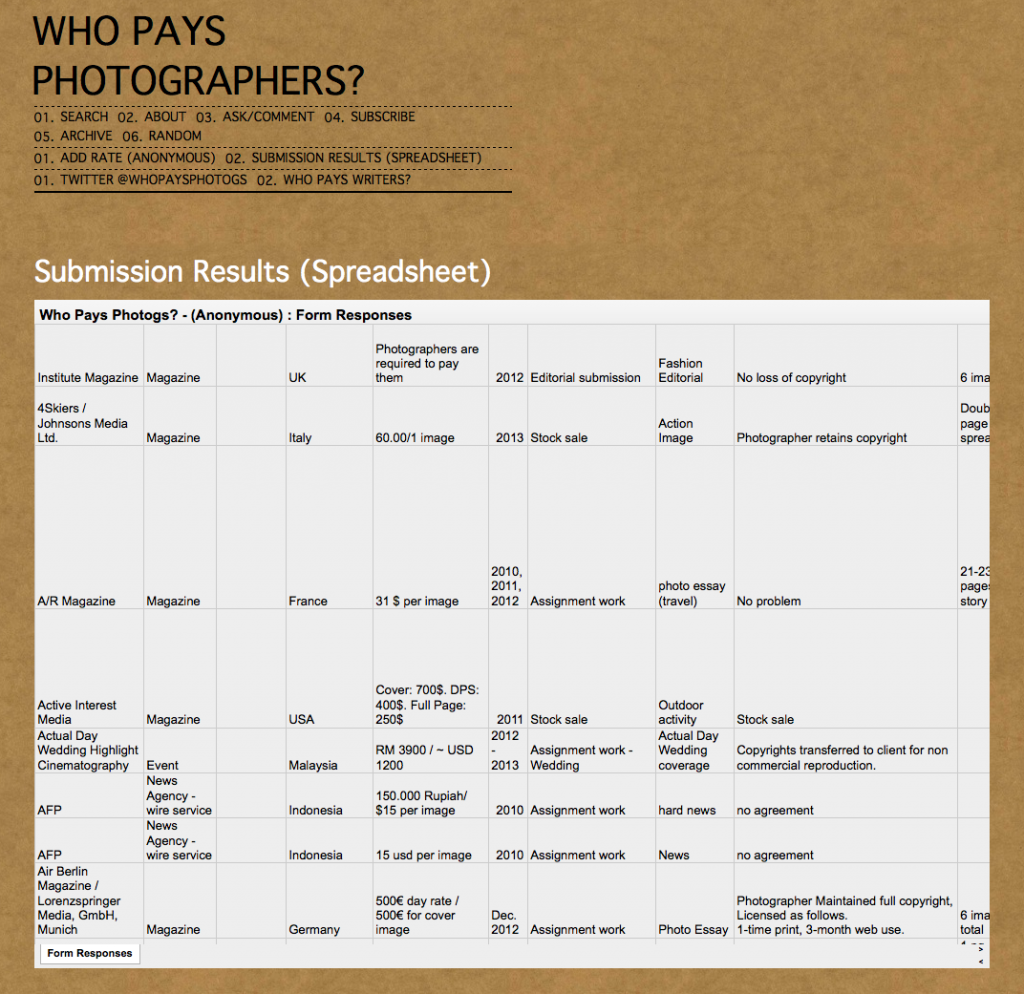Posts Tagged ‘sales’
Money For Photographs
August 1st, 2014by Gwyn Headley
Managing Director
Tags: Cape Town, fotoLibra, Greg Lumley, payments, photo, sales, Who Pays Photographers
Is it August already? Where does the time go? And where does the money go?
In a week where Greg Lumley, a South African photographer, made the news by offering a unique ultra-hi res print of his gorgeous photograph of Cape Town for $35,000, an influential photo magazine despondently commented that “Photography as a business is competing in a race to the bottom. Photographs are regularly devalued by people who steal them, agencies that sell them for a pittance, and photographers who are willing to work for free.”
It is very true that it’s a rough time to be in the picture sales business. Clients have lost interest in the quality of the image; their sole concern is price. National newspapers are a closed shop — management won’t allow picture desks to use anyone other than their contracted agency, unless the paper’s readers give them up for free, an acquisitions policy energetically pursued by the BBC among many others. And the agency’s photographers are up in arms because their images are being traded for pence.
Meanwhile photographers spend more and more on kit which makes their already great images even better, and still no one is buying. Tiny publishers who 20 years ago would come cap in hand for permission to buy from the lordly picture libraries now want to pay prices for RM images that you’d expect to see on a £50,000 a month contract. Mind you, they don’t get them; not from us at any rate. It’s like being bullied at school. Once they start picking on you, even the weediest gurly will fancy his chances chiz chiz.
Yesterday I came across this eye-opener of a website, Who Pays Photographers?
It’s a crowd-sourced spreadsheet of publishers around the world who pay — or don’t pay — for photography. It makes riveting, if clunky, reading. Everyone who’s ever sold a picture, or tried to, should have a look at this. And contribute, if you can.
The site owner writes: “[This is] a space to list how much — and how little — magazines, newspapers, websites, NGOs and corporations pay photographers. Editorial, commercial, advertising, entertainment — any and all presented. Listing based on anonymous submissions. This is intended as an exercise in sharing, rather than shaming — but feel free to warn your fellow photogs about deadbeats.”
The creator of this fascinating site prefers to remain anonymous, but gives credit for the idea to Manjula Martin, who devised the ‘Who Pays Writers?‘ website. I’d remain anonymous too if I came up with the bowel-tinged background colour of the site. Maybe it looks OK in Windows. It certainly doesn’t on a Mac.
I remember reading last year on several photographic forums that more than one American photographer was claiming recent $10,000 sales for book front cover image usage. But to a man they were too bashful to reveal the names of the books, the publishers, or even to show off their expensively purchased images.
Oddly, those sort of claims don’t appear on the Who Pays Photographers? site. But reports of offers of “picture credits” abound.
DON’T give your pictures away for a credit. You know what a credit is worth. As my friend Mike Shatzkin used to say, “That, and 10¢, will get you a subway token.” I’ll update him — “That, and £4.70, will buy you a tube ticket to travel the 260 metres between Covent Garden and Leicester Square.”
Shatzkin’s is pithier. Mine is scarier. But they’re both true.
It’s got to be today
April 17th, 2009by Gwyn Headley
Managing Director
As I write this there are 299,898 high quality, hi-res images for sale on fotoLibra.
Today we will break the 300,000 barrier. I hope.
Of course like 300 ppi, it doesn’t actually mean a lot. Except for a lot of hard work from our wonderful photographers and, I must admit, us.
We’d be celebrating if it wasn’t for the fact that both Yvonne and Damien are off sick. So I guess I’ll have to have the champagne all to myself, as Jacqui and Llinos aren’t here.
Unlike the big portal sites, who have thousands of identical images accumulated from other image libraries and shot as blandly as possible for stock, we have individual images by individual photographers — 17,000 of them. Hand crafted rather than mass produced.
Hey — it’s a landmark. Well done everybody.



